ユーザーの操作性と効率性を重視する基本原則を適用して、Wear OS でメディア エクスペリエンスを設計します。
一貫性があり予測可能
UI パターンを調整し、一般的な操作のための新しい UI の作成を避けます。
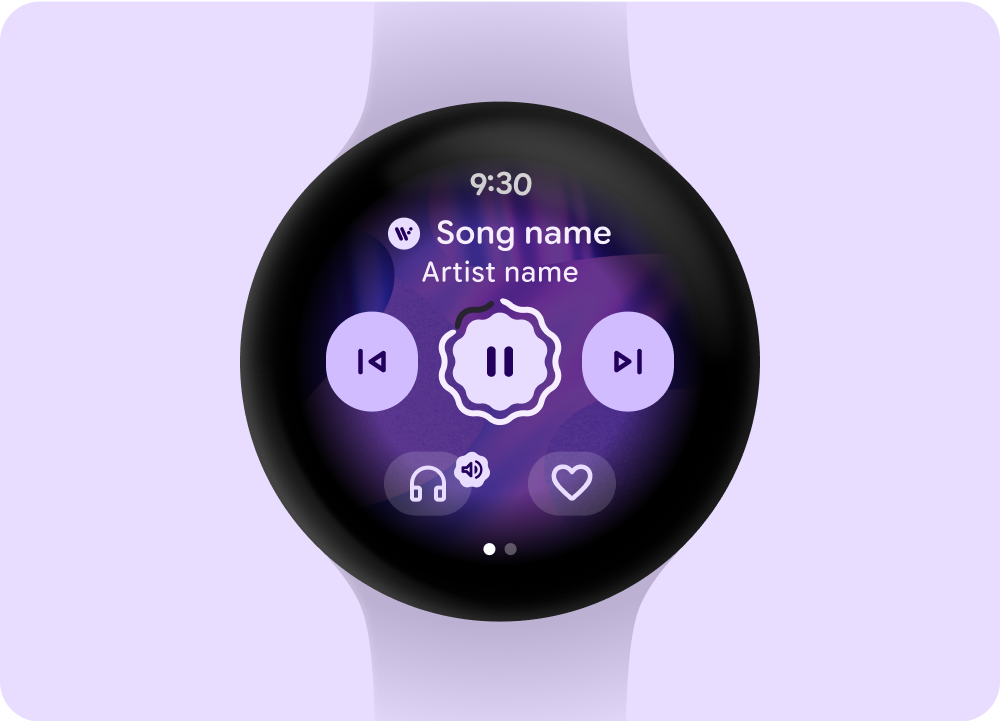
ひと目でわかるクリティカルな情報
重要なコントロールとコンテンツを明確な情報の階層で表示し、ユーザーがスマートウォッチでメディアのブラウジングと再生をコントロールできるようにします。
現在のデバイスの音量や接続されている出力デバイスなどの動的なステータスを反映します。
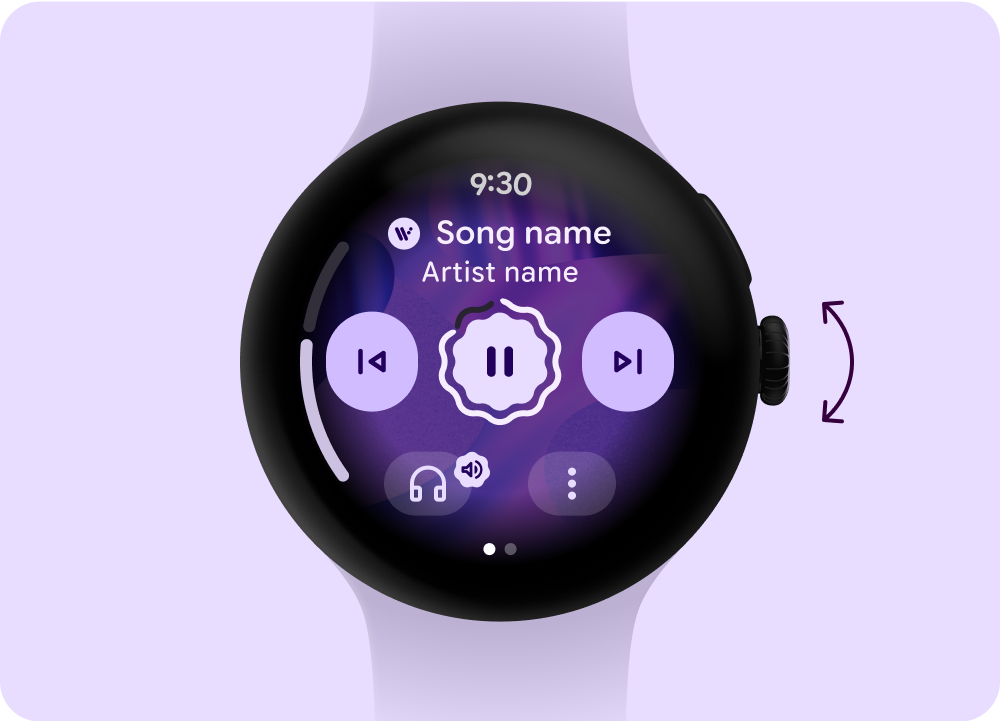
迅速かつ一貫性がある
オンボーディングや空間記憶容量を必要とする、隠れたジェスチャーや操作パターンは避けてください。追加機能にユーザーを明確に誘導する視覚的なアフォーダンスをインラインで提供します。
システム UI とアプリ UI を含むユーザー ジャーニーがシームレスに統合され、ユーザーがコンテキストをまたいでサーフェス間を移動する際に重複する画面が表示されないことを確認します。
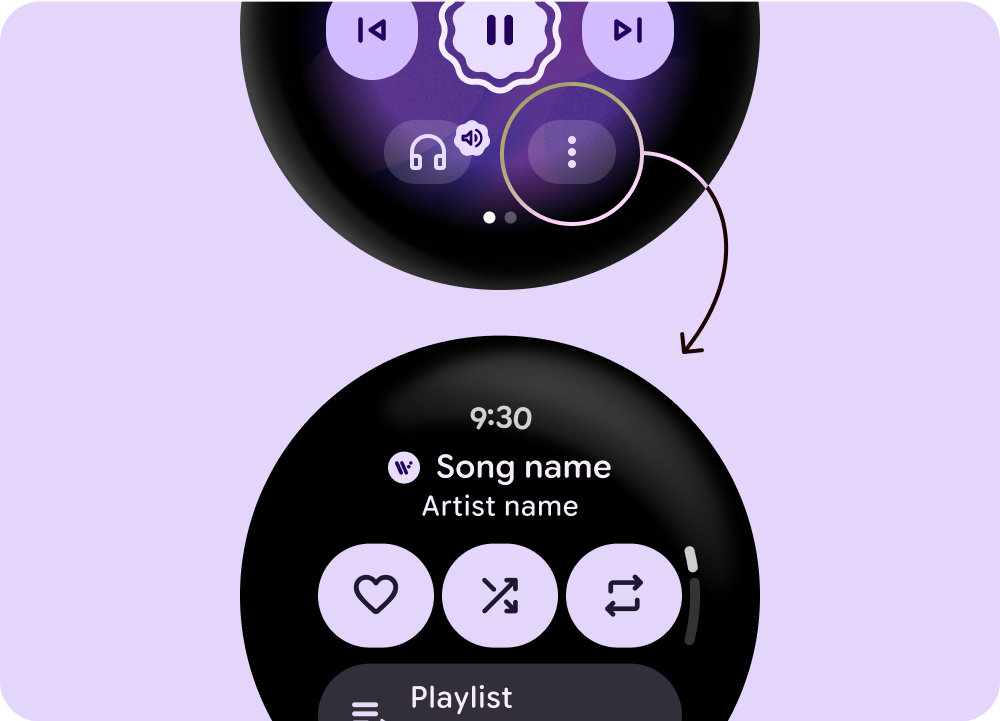
一般的な設計パターン
以降のセクションでは、Wear OS のメディア エクスペリエンスの一般的なデザイン パターンについて説明します。
オーバーフローボタン
オーバーフロー ボタンを使用して、一貫したナビゲーションとより多くの機能を提供します。
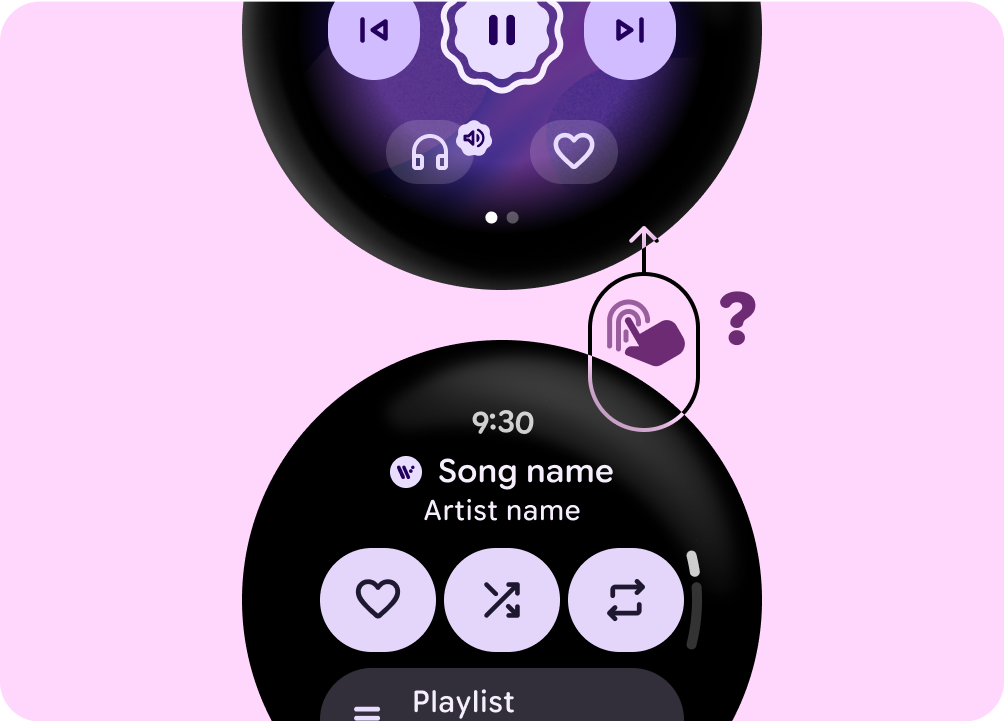
禁止事項
ユーザーがナビゲーションを記憶する必要がある隠しジェスチャーに依存する。
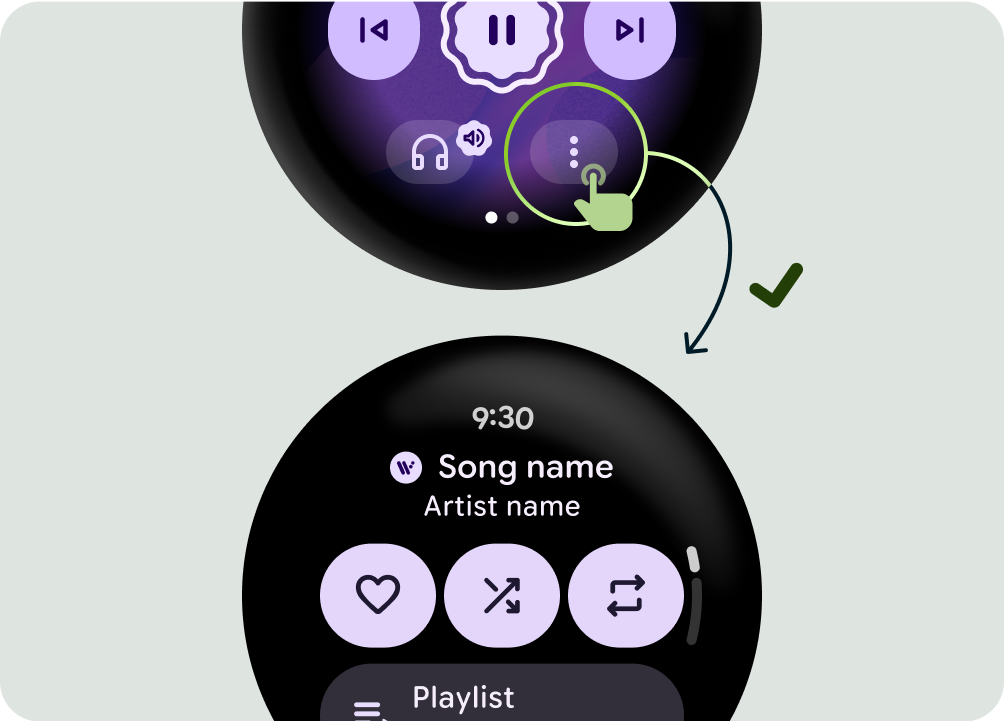
推奨事項
追加機能にアクセスするためのオーバーフロー ボタンをユーザーにわかりやすく表示します。
メディア オプションへの一貫したアクセス
メディア サーフェスとコンテキスト全体で機能への一貫したアクセスを提供します。
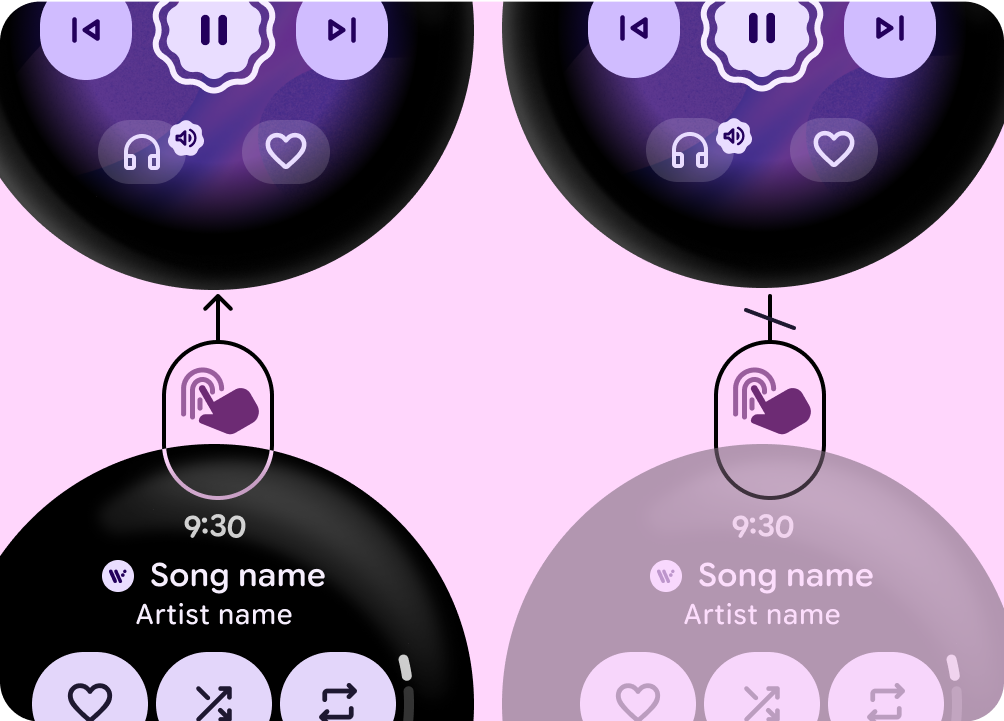
禁止事項
メディア サーフェスやコンテキスト間でメディア コントロールのパターンが一貫していないと、ユーザーの混乱や認知負荷につながります。
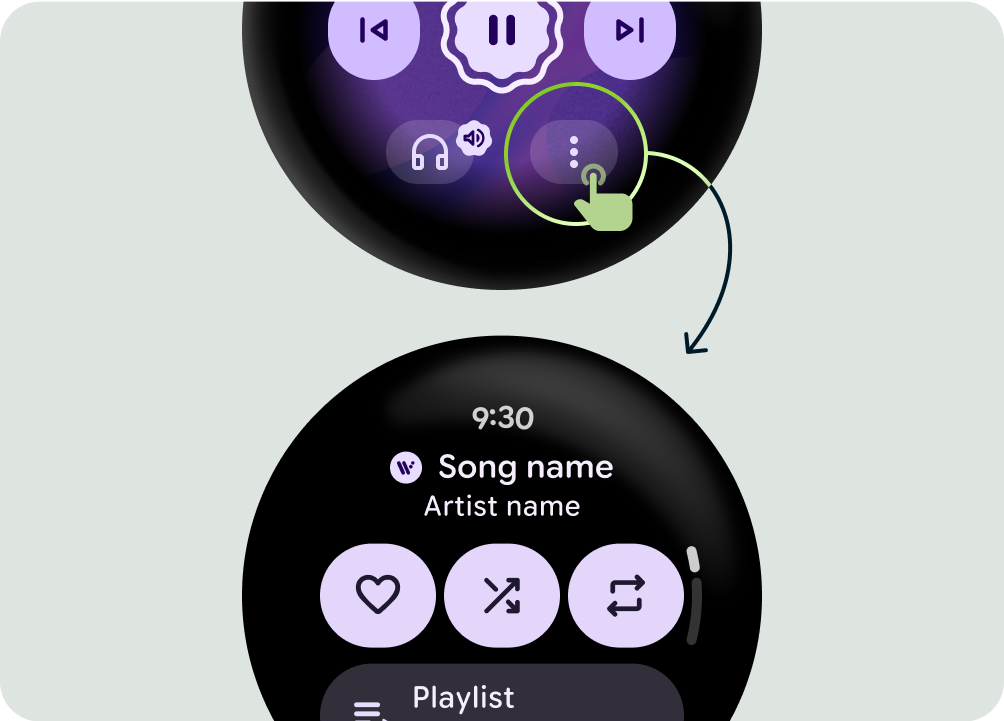
推奨事項
メディア サーフェスとコンテキスト全体で一貫したパターンを提供します。
音量の調整
タップ アフォーダンス、音量バー、ハードウェア コントロールなどの主要な音量コントロール操作を使用して、重要な音量タスクを実行できることを確認します。
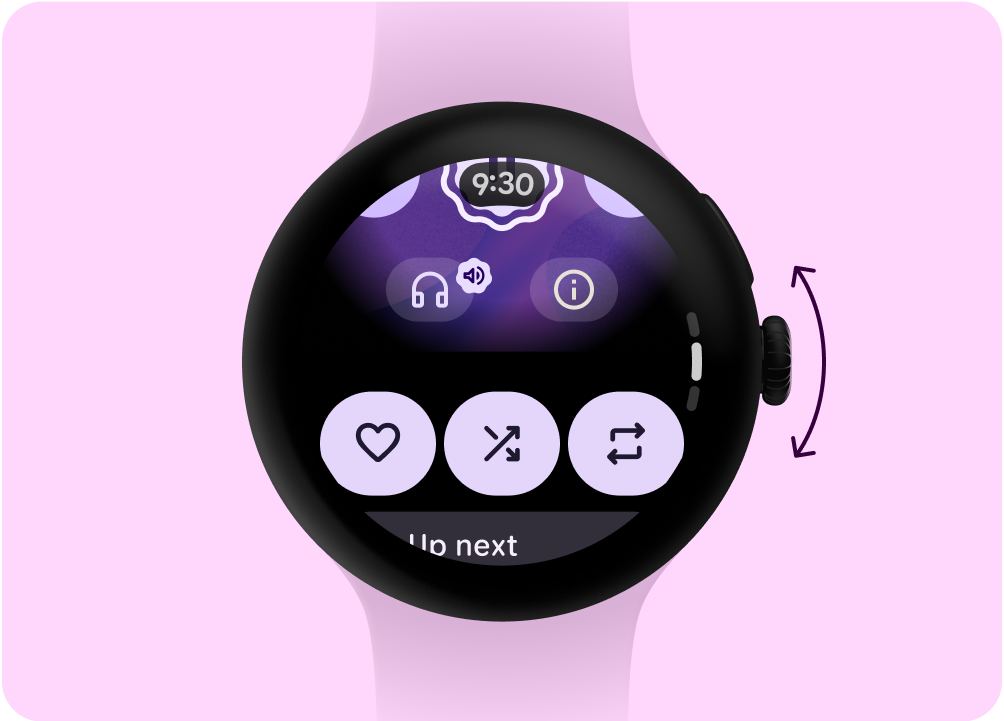
禁止事項
ハードウェアで音量を調節できないと、ユーザーは混乱します。
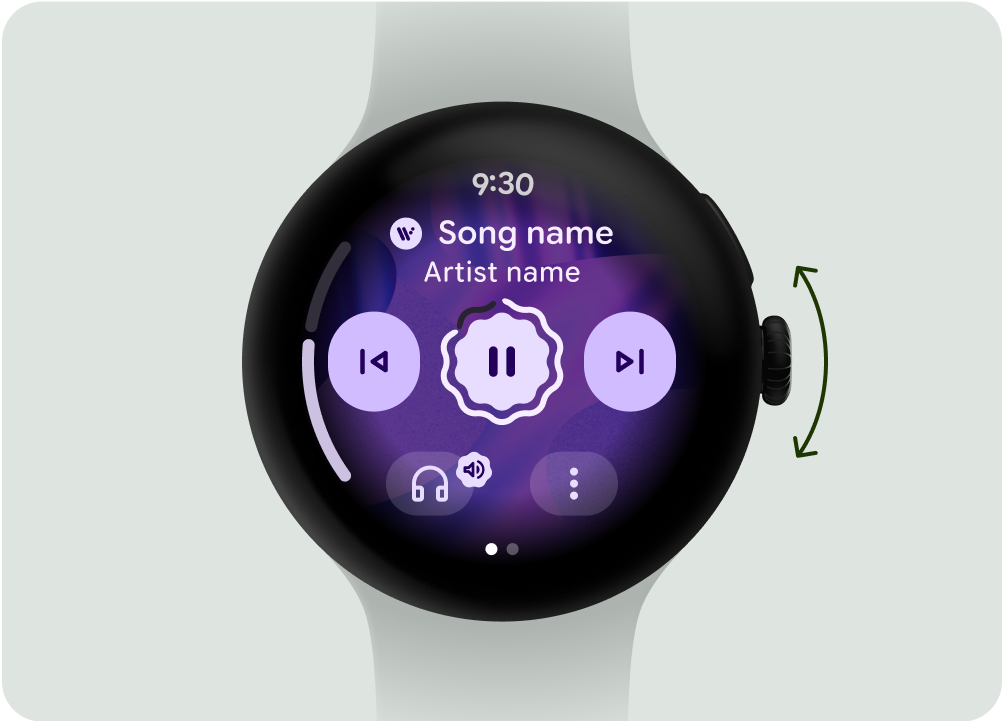
推奨事項
ハードウェア クラウンで音量を調節できるようにします。
出力デバイス
ユーザーがメディア再生の聴取に使用しているデバイスを明確に示すアイコンを使用します。
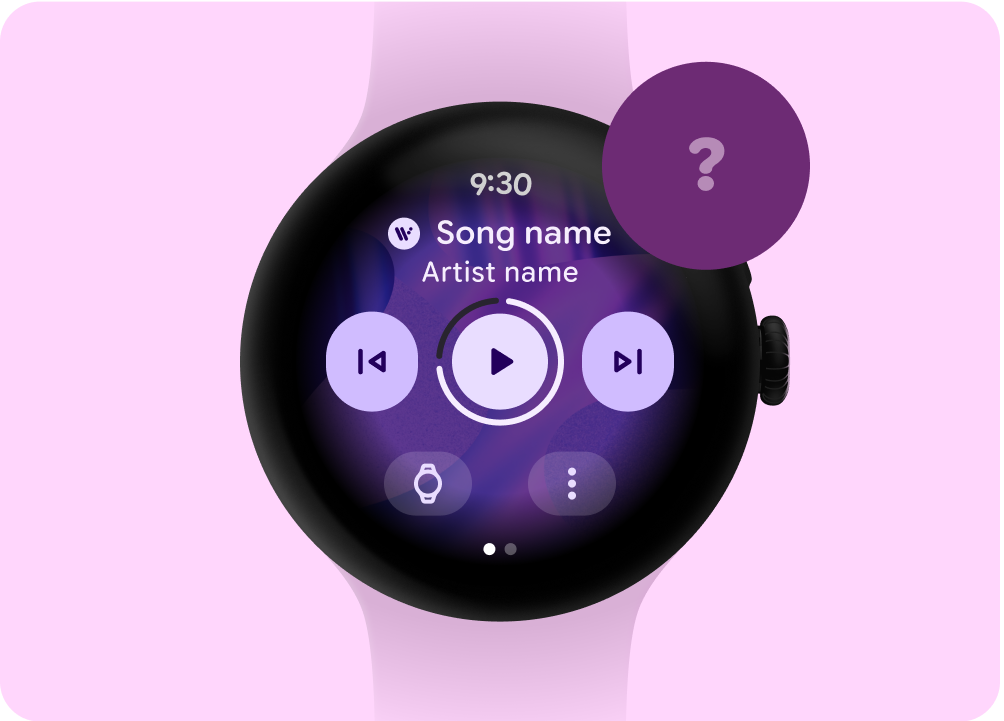
禁止事項
アイコンに、音の出力先と音量調整の場所が反映されない
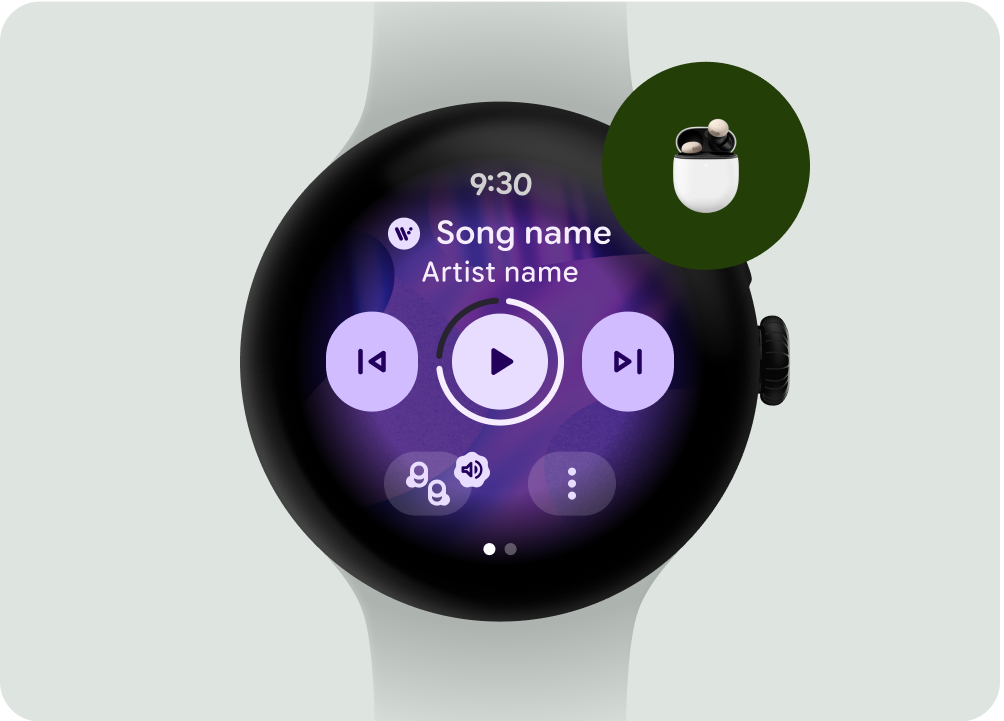
推奨事項
出力デバイスのステータスを音量調節の表示に反映する
複数のデバイスに拡張する
デバイス間の整合性を考慮し、既存のパターンを使用して、より予測可能で一貫性のあるユーザー エクスペリエンスを実現します。

